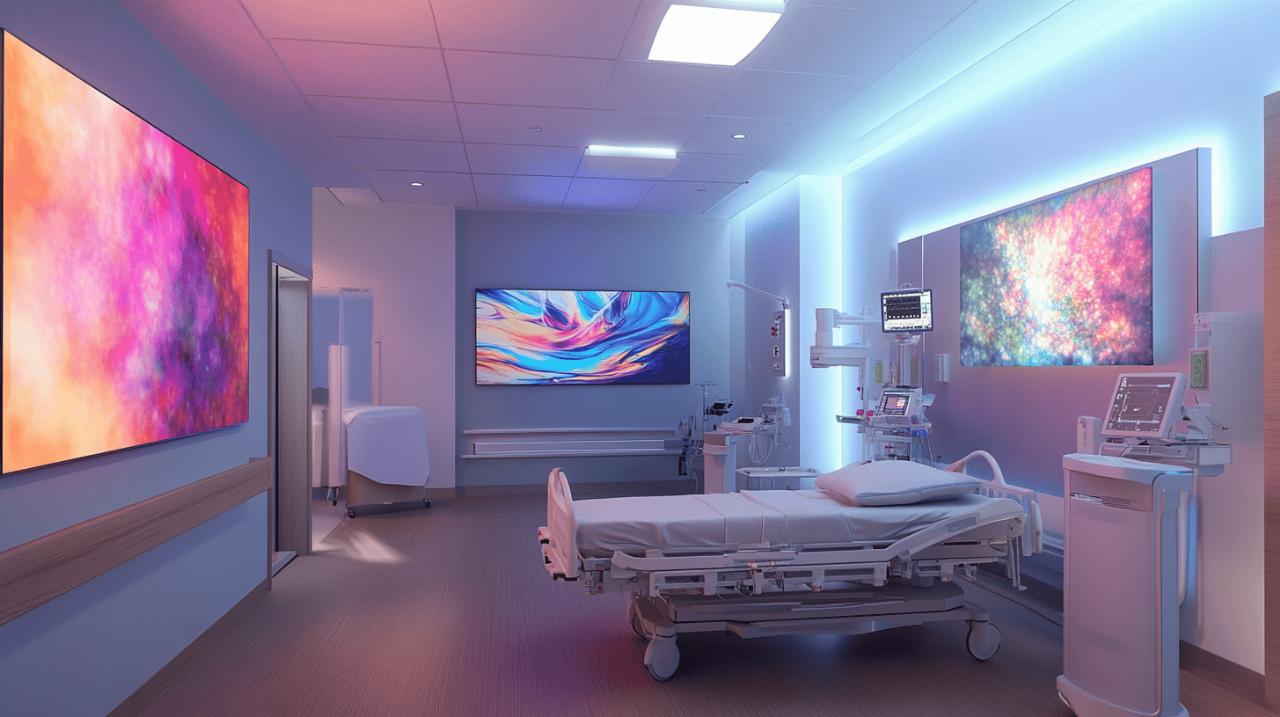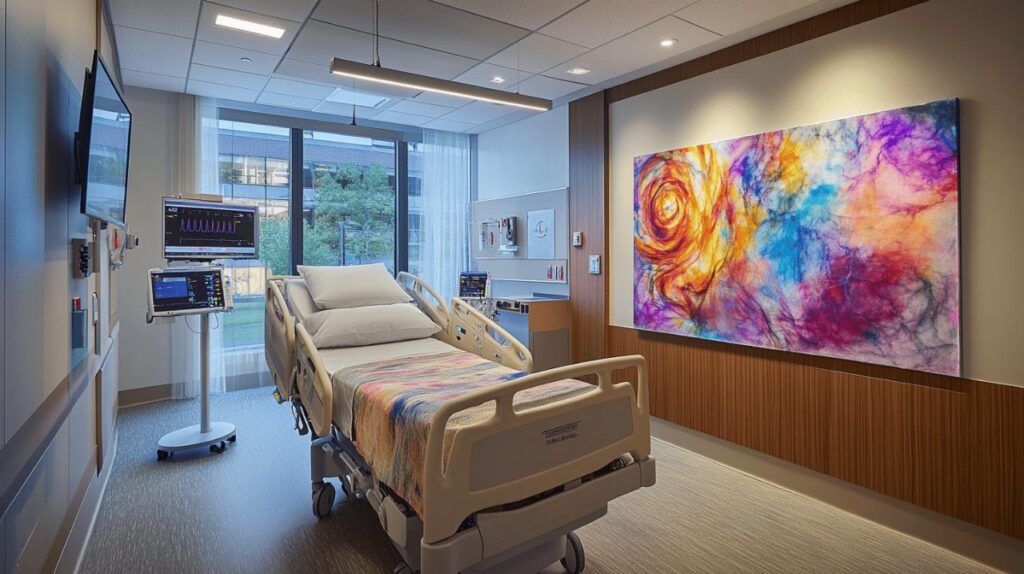When we step into a hospital, the sterile environment can often feel cold and unwelcoming. Yet, a growing body of research suggests that integrating art into healthcare settings can transform these clinical spaces into healing environments that nurture both body and mind. The strategic placement of visual art in hospitals isn’t merely decorative—it represents a powerful tool in patient-centred care approaches that are gaining recognition worldwide.
Psychological Effects of Art in Hospital Settings
The psychological impact of art in healthcare environments cannot be overstated. A comprehensive review examining visual art in hospitals found that a Department of Health group in 2006 officially recognised art’s capacity to improve health and well-being. This acknowledgment has led to increased integration of artwork in medical facilities, as seen in the transformation of Scottish hospitals including Edinburgh Royal Infirmary, Stobhill Hospital, and Victoria Infirmary in Glasgow. These institutions have embraced art as a healing tool, with projects designed to create more therapeutic spaces. For more insights on innovative healthcare approaches, resources and articles on supporting patients, as you can find on https://www.asgoponlus.it/, are increasingly highlighting the value of environmental interventions.
How visual art reduces anxiety and stress levels
The presence of thoughtfully selected artwork can significantly reduce anxiety and stress levels among patients. Research indicates that environmental psychology plays a crucial role in how patients perceive and respond to their surroundings. Colour therapy, for instance, has emerged as an important consideration—calm colours promote relaxation, while inappropriate colour schemes may inadvertently increase anxiety. Studies tracking patient responses to hospital atmospheres reveal that anxiety reduction is most effectively achieved through art featuring nature imagery and landscape scenes, which create a visual escape from the clinical setting.
Creating emotional connections through artistic expression
Art in hospitals goes beyond mere distraction—it establishes meaningful emotional connections that support cognitive stimulation and emotional wellbeing. The Royal Infirmary of Edinburgh exemplifies this approach with artwork based on memories shared by former staff and patients, creating a sense of continuity and community. These emotional connections help patients maintain their identity within the often depersonalising hospital environment. Anthropological research involving interviews with 30 patients averaging 62 years of age demonstrated that art contributes to emotional security and personal connection, counteracting the isolation that can accompany hospitalisation.
Physical Benefits of Art Integration in Healthcare
Beyond psychological comfort, the integration of visual art in healthcare settings yields measurable physical benefits that directly impact recovery trajectories. Evidence-based design in healthcare architecture increasingly incorporates artistic elements as functional components of the healing environment rather than mere decorative additions.

Pain reduction through visual distraction techniques
Art serves as an effective pain management tool by providing visual distraction from discomfort. One compelling study found that patients exposed to videos of nature scenes demonstrated increased pain tolerance compared to control groups. This distraction effect extends to patients experiencing both acute and chronic pain, offering a non-pharmaceutical complement to traditional pain relief approaches. The mechanism appears to involve cognitive redirection—when patients engage with artwork, their attention shifts away from pain signals, potentially altering pain perception. Carefully selected art can therefore contribute to comprehensive pain relief strategies in healthcare settings.
Measurable improvements in recovery rates and hospital stays
Perhaps most striking are the documented improvements in tangible healthcare outcomes associated with art integration. A groundbreaking study revealed that patients in rooms with views of nature required less pain medication and experienced shorter hospital stay duration than those facing brick walls. This finding suggests that therapeutic spaces incorporating natural elements through art can accelerate healing processes. Patient satisfaction metrics consistently improve in facilities that thoughtfully integrate artwork, particularly when patients have input into selection. One study allowed patients to choose art for their rooms, resulting in better self-reported wellbeing scores. These healthcare outcomes translate to economic benefits through reduced hospitalisation periods and decreased medication requirements.
The evidence supporting art integration in hospitals continues to grow, though researchers acknowledge varying quality across studies. What remains clear is that when thoughtfully implemented—with attention to patient preferences for landscape scenes, natural imagery, and calming colour palettes—art creates healing environments that benefit patients physically and emotionally. As hospitals increasingly embrace evidence-based design principles, the integration of visual art stands as a powerful example of how environmental factors can support clinical care in creating truly therapeutic spaces.

